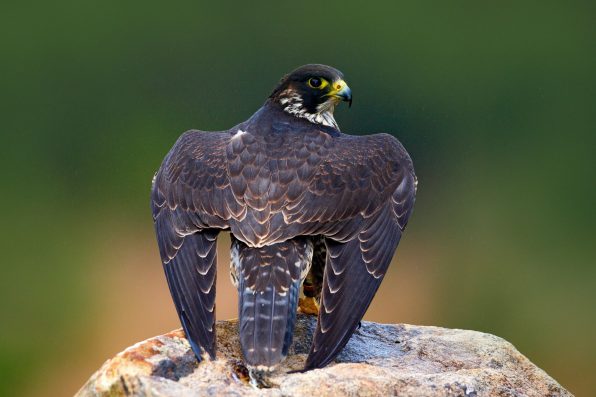Peregrine Falcons Have Bounced Back In Yosemite, Thanks To Expert Rock Climbers

At Yosemite National Park, peregrine falcons have bounced back thanks to teams of expert rock climbers. The species was once on the brink of extinction due to the use of pesticides, but in recent years, their numbers have seen a significant increase.
Peregrine falcons are known as the fastest animal in the world. They can reach speeds of up to 200 miles per hour when they dive to catch their prey. They build their nests and raise their young on rocky cliffs.
Rock climbers can disturb the falcons and have even been listed as a potential threat to the species. However, rock climbers have actually been a valuable resource for the birds. They contribute to Yosemite’s Peregrine Falcon Protection Program by reaching hard-to-access areas to check on how the birds are faring.
The peregrine falcon population was thriving before the mid-20th century. There were more than 3,800 pairs of adult peregrines in the United States. However, their numbers began to decline after World War II because of pesticides like dieldrin, aldrin, and DDT.
Dieldrin and aldrin killed the birds, while DDT caused chicks’ eggshells to be very thin and weak. By 1974, only 394 pairs remained in the U.S. Peregrine falcons were declared a federally endangered species in 1970.
The following year, they were placed on California’s endangered species list. The birds vanished altogether in Yosemite. The last pair was seen at the park in 1941 on Mount Broderick above the Mist Trail.
In 1972, the U.S. Environmental Protection Agency (EPA) banned the use of DDT. Two years later, the agency banned most uses of dieldrin and aldrin. Finally, in 1978, all uses of the pesticides were prohibited.
In 1978, climbers Dale Bard, Hugh Burton, Bruce Hawkins, and Ron Kauk discovered an active peregrine falcon nest while ascending the southeast face of Yosemite’s El Capitan. They notified conservationists of the find, which spurred an ambitious recovery effort.
The Santa Cruz Predatory Bird Research Group enlisted the assistance of the climbers to gather samples of eggshells from the nest. Researchers then incubated the eggs in a laboratory so they could hatch in a safe environment.

ondrejprosicky – stock.adobe.com – illustrative purposes only, not the actual peregrine falcon
Once they hatched, the climbers would help return the chicks to the nest, all while navigating rocky terrain and risking attacks from peregrine falcon parents.
Over the last 15 years, climbers have helped protect the birds through the Peregrine Falcon Protection Program in this same way. In 1999, peregrine falcons were taken off of the endangered species list.
Recently, the National Park Service and the Yosemite Conservancy took a look at the number of falcons within the park.
In the spring of 2024, there were 17 breeding pairs, which was a nearly 113 percent increase from the eight pairs in 2009.
Additionally, 15 nests and 25 chicks were counted. Overall, a total of 51 nesting sites within Yosemite have produced 385 baby birds since 2009.
According to the American Bird Conservancy, as many as 40,000 individuals are now estimated to be in North America.
Their remarkable comeback represents the health of the entire ecosystem at Yosemite, which is promising for the future of our environment.
Sign up for Chip Chick’s newsletter and get stories like this delivered to your inbox.
More About:Animals





